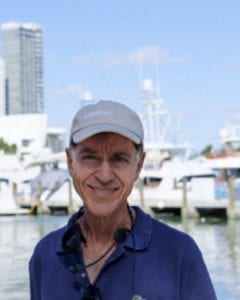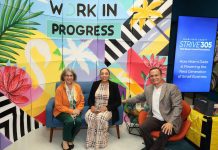|
Getting your Trinity Audio player ready...
|

In the previous installment of this column, we discussed the contract of October 24, 1895, setting forth the items previously agreed upon by Flagler and Tuttle. By then, Flagler surveyor, A.L. Knowlton was in Miami surveying and platting a town site for what would become the City of Miami in the following year.
In early November 1895, Flagler was also in Miami; he was likely there to sign the contract of October 24. Activity in Miami continued to rise. Black and white men flocked to the tiny settlement on the Miami River from many parts of Florida, hopeful of employment on Flagler’s promised hotel and city. Many had been victimized by the great freezes of 1894 and 1895 and were looking to start over. Since there were no accommodations for them, they lived in tents and huts in the wilderness near the north bank of the Miami River.
In January 1896, more than 200 men were clearing a town site for Miami. In February 1896, Flagler’s Florida East Coast Railway reached Fort Lauderdale and the north bank of the New River. The train would not cross the New River until two months later, after a trestle had been completed. In the meantime, the Florida East Coast Canal was completed to Biscayne Bay, enabling steamboats to convey passengers from arriving trains at Fort Lauderdale to Miami.
Additionally, in February 1896, Julia Tuttle signed, in concert with her agreement with Flagler, deeds transferring land for a hotel, and 100 acres of land immediately west of the hotel site, except for her home site, to Flagler. Although the Brickells, in a separate contract with Flagler, provided him with choice land on the south bank of the Miami River as an additional inducement for extending his rail line to Miami, the railroad baron paid little attention to developing these properties in the manner he was planning for the land on the north bank, even though it was a key element in this agreement. Walter S. Graham, who would begin publishing Miami’s first newspaper in May 1896, noted this shortcoming, warning that the south side was “not receiving the proper attention (from Flagler), and the Brickells were getting very sore.” Graham believed Flagler should commence construction immediately on a bridge, which was also promised in the October 1895 agreement, and that work should proceed concurrently on the streetscapes on both sides of the stream.
In early March, 1896, John Sewell, at the behest of Flagler and his top lieutenant, Joseph A. McDonald, arrived in Miami from West Palm Beach with twelve Black workers to grade a site for Flagler’s hotel. The land was cleared by machete and hard labor. Additionally, Sewell’s workers cleared an Indian burial mound that rose twenty-five feet in height, in the estimation of Sewell, and spread over seventy-five feet of land. Workers retrieved scores of skulls and other portions of bodies from the mound. By the summer of 1896, hundreds of men were busy building a grand hotel on that site.
Later that month, the railroad’s extension had reached today’s North Miami. Additional workers continued to pour into Miami. Julia Tuttle’s Miami Hotel was rising near the north bank of the Miami River along today’s South Miami Avenue in response to this surge of numbers. Nearby the Hotel Miami was the Rockledge, a steamboat converted into a floating hotel.
By the spring of 1896, additional businesses were opening. They included Frank Budge’s hardware store, Frank Duren’s meat market, E.L. Brady’s grocery store, and the Lummus Brothers’ general store. A few months later, a new city would arise in an area that was a wilderness just a year earlier.
In our next installment of this column, we will examine the accelerating development of Miami leading to its incorporation as a city in July 1896.
Paul S. George, Ph.D., serves as Resident Historian, HistoryMiami Museum. He conducts history tours throughout the County and even beyond for HistoryMiami. Additionally, he teaches classes in Miami/S. Florida and Florida history for the Museum. Dr. George has also led, since 2002, tours of Little Havana as part of Viernes Culturales, a monthly celebration, every third Friday, of the culture and history of that quarter. The tours are open to all and are free!





